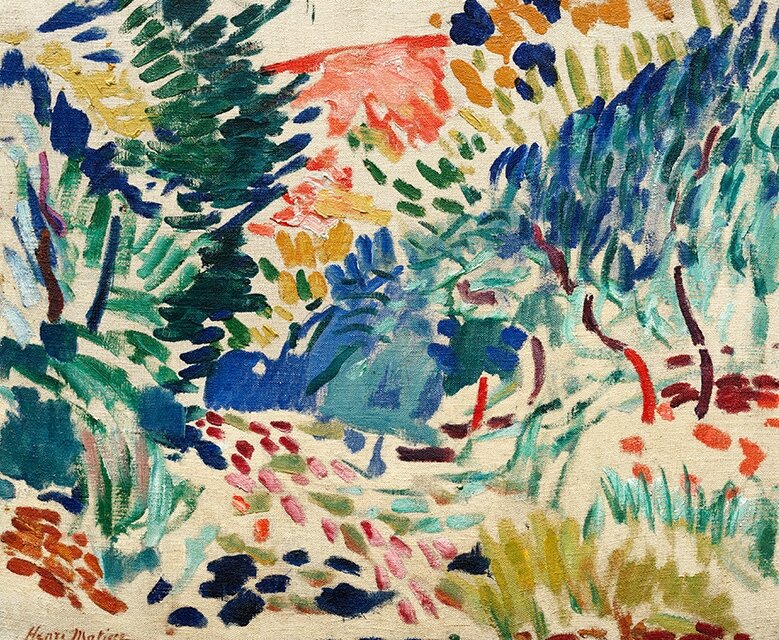Gemeentemuseum 3 October 2015 – 3 January 2016
In the brief period between 1885 and the outbreak of war in 1914 painting in the Low countries experienced a modern Renaissance. Colour was liberated from the chains of visual reality. Suddenly, grass could be a cool blue, a face could be bright purple, and trees turned red. Colour had become an autonomous means of expression. This was one of the most important developments in modern art history. The inspiration came from the French Impressionists and Neo-Impressionists, but the artists of the Low Countries added their own flavour. Gemeentemuseum Den Haag is to bring these Dutch and Belgian masters together to reveal the interaction between the two countries, which included both pronounced differences and similarities. This unique exhibition has been made possible thanks partly to the current renovation of the Royal Museum of Fine Arts in Antwerp, as a result of which some of the top items in its collection can now travel to other museums. From the French ‘godfathers of colour’ – Claude Monet, Paul Signac,
Henri Matisse, Landscape at Collioure, 1905, oil on canvas, 38.8 x 46.6 cm, Museum of Modern Art, New York.
Henri Matisse and Paul Cézanne and the like – to the masters of the Low Countries, such as Leo Gestel, Jan Toorop, Piet Mondrian, James Ensor, Jan Sluijters, Henry van de Velde and Rik Wouters: they will all be brought together in a true feast for the eye.
The story of the modern Renaissance in the Low Countries began in 1883 at artists’ society Les Vingt in Brussels. There, artists including Theo van Rysselberghe, Jan Toorop and Henry van de Velde first encountered the Impressionism and Pointillism of French fellow artists Claude Monet, Georges Seurat, Paul Signac and others. This made a deep impression on the Belgian and Dutch artists. They then developed from followers of Impressionism and Neo-Impressionism into the founders of modern art, in which the medium of colour was separated from visual reality. Thanks to Toorop, modern art spread via Brussels to The Hague and Amsterdam, where it gave rise to Amsterdam Luminism. Influenced by the work of Vincent van Gogh, artists like Mondrian, Sluijters and Gestel used colour and form as a means to express their own personal perceptions. This resulted in powerful and sensational colour combinations, as in
Mondrian’s Windmill in Sunlight
or Sluijters’ Moonlit Night II, Laren.
It was no coincidence that this modern Renaissance took place at such a tumultuous time. The period 1885-1914 was full of optimism and continual discovery. Confidence in the future, enthusiasm, but also the uncertainty that is always associated with innovation typify the art of the period. Take for example
Jan Sluijters'Bal Tabarin, a tribute to the newly invented electric light.
With over 100 magnificent artworks – combined with photographs, letters and other archive material – Colour Unleashed will recount how developments followed each other in rapid succession until the First World War brought everything to a standstill.
Rik Wouters
The exhibition will include a special focus on Belgian artist Rik Wouters (1882-1916). In his short life, this painter and sculptor produced an exquisite body of work. His paintings, many of them featuring his wife Nel, vibrate with colour and light. He is a great favourite with the Belgian public, but in the Netherlands he has never received the attention his work deserves. An entire gallery will therefore be devoted to him during the exhibition.
Restoration project
In preparation for Colour Unleashed the Gemeentemuseum has worked on a project that has included a technical study and restoration of a number of important paintings from the collection. The team of restorers focused on the original colours in the paintings, which had changed over the years due to dirt and discoloration. The varnish was removed and the paint surface cleaned to reveal the original layers of paint, allowing the paintings to glow as the artists intended. For instance, the somewhat gloomy
Baby’s Bedroom by Jan Sluijters suddenly dazzles in pink and yellow,
and the green in Little House in Sunlight by Piet Mondrian turns out to consist of many shades of blue,
while the flowers in the garden in Jan Toorop’s Trio Fleuri bloom in full colour once more. A number of works on loan have also been specially restored for the exhibition.
The exhibition is being staged in close collaboration with the Royal Museum of Fine Arts in Antwerp and is part of a special year of events celebrating the cultural ties between the Netherlands and Flanders.
Kees van Dongen, Portret van Dolly, 1909.
A catalogue with contributions from Frouke van Dijke, Doede Hardeman, Anita Hopmans, Hans Janssen, Caroline Rodenburg and Herwig Todts is to be published in Dutch in conjunction with the exhibition.






















